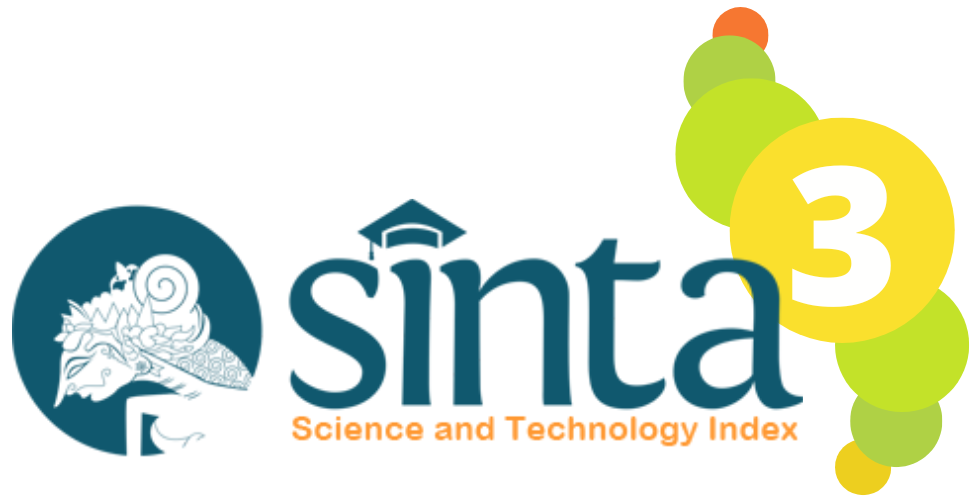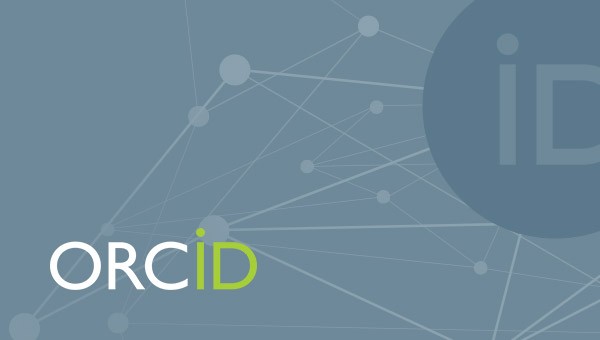Development of e-Module Using Problem-Based Learning Model Assisted by Heyzine Flipbook on Static Fluid Topic for Senior High School Students
DOI:
10.29303/jpft.v11i1.8705Published:
2025-05-16Issue:
Vol. 11 No. 1 (2025): January-JuneKeywords:
e-Module, Problem Based Learning, Physics learning, High quality educationArticles
Downloads
How to Cite
Downloads
Metrics
Abstract
This study aims to develop a valid and practical problem-based learning e-module using Heyzine Flipbook to enhance student understanding of static fluid concepts. This study employed the Research and Development (R&D) methodology using the 4D Model. The participants included expert validators, consisting of media experts, material experts, practitioners, and fifty eleventh-grade students from various high schools. Data were collected through validation instruments and student response questionnaires, and the results were analyzed descriptively. The findings revealed that the developed e-Module fulfilled the criteria of being highly valid and practical. Media expert validation achieved an average score of 85%, while material expert validation obtained a score of 83.5%, indicating that the e-Module is suitable for use. Student responses to the e-Module were overwhelmingly positive, with a practicality score of 88%. This study suggests that PBL-based e-Modules can serve as an effective alternative learning medium to promote interactive learning and enhance the quality of physics education. Future research should focus on evaluating the effectiveness of this e-Module on a larger scale and further exploring its application in teaching static fluid concepts.
References
Adam, K. R., Arafah K., Usman. (2023). Pengembangan E-Modul Pembelajaran Fisika Berbasis Web Pada Materi Momentum Dan Impuls. Jurnal Sains dan Pendidikan Fisika (JSPF). From https://doi.org/10.35580/jspf.v19i3.35488 DOI: https://doi.org/10.35580/jspf.v19i3.35488
Ajri, A. S., & Diyana, T. N. (2023). Pengembangan E-Modul berbasis problem based learning berbantuan liveworksheets untuk mengoptimalkan keterampilan pemecahan masalah. Jurnal Kajian Pendidikan IPA, 3(2), 223-234. From https://doi.org/10.52434/jkpi22377 DOI: https://doi.org/10.52434/jkpi.v3i2.2377
Anggreni, F., & Sari, R. (2022). Pendampingan penysunan emodul menggunakan aplikasi Heyzine untuk mendukung Program Madrasah Digital. The 4th International Conference on University Community Engagement (ICON-UCE 2022), 4, 262–267. Retrieved from https:// icon-uce.com/index.php/iconuce/article/view/36
Ashari, L. S., & Puspasari, D. (2024). Pengembangan E-Modul Berbasis Heyzine Flipbook pada Mata Pelajaran Otomatisasi Humas dan Keprotokolan di SMKN 2 Buduran Sidoarjo. INNOVATIVE: Journal Of Social Science Research, 4(1), 2565-2576. From: https://j-innovative.org/index.php/Innovative
Azizah, R., Yuliati, L., & Latifah, E. (2015). Kesulitan pemecahan masalah fisika pada siswa SMA. Jurnal penelitian fisika dan aplikasinya (JPFA), 5(2), 44-50. From https://doi.org/10.26740/jpfa.v5n2.p44-50 DOI: https://doi.org/10.26740/jpfa.v5n2.p44-50
Datur, I. S. (2017). Kemampuan pemecahan masalah materi fluida statis melalui pembelajaran berbasis masalah berbantuan thinking map. Jurnal Inspirasi Pendidikan, 7(2), 118-127. From https://doi.org/10.21067/JIP.V7I2.1746
Dwikoranto. Dawana, I. R., & Setiani, R. (2023). Validity of Teaching Modules with Problem-Based Learning (PBL) Model Assisted by E-Book to Improve Problem-Solving Skills on Renewable Energy Material and Implementation of Independent Learning Curriculum. In Journal of Physics: Conference Series (Vol. 2623, No. 1, p. 012015). IOP Publishing. DOI: https://doi.org/10.1088/1742-6596/2623/1/012015
Erlangga, S. Y., Susanti, S., & Amalia, A. F. (2022). Pengembangan e-modul fisika materi gelombang dan bunyi berbasis local wisdom alat musik gamelan pada mata kuliah fisika dasar. COMPTON: Jurnal Ilmiah Pendidikan Fisika, 9(2), 90-98. From: https://doi.org/10.30738/cjipf.v9i2.14154 DOI: https://doi.org/10.30738/cjipf.v9i1.14154
Hidayatullah, H. N., Suprapto, N., Mubarok, H., & Wulandari, D. (2020, March). Implementation of problem based learning to train physics students’ problem solving skills. In Journal of Physics: Conference Series (Vol. 1491, No. 1, p. 012053). IOP Publishing. DOI: https://doi.org/10.1088/1742-6596/1491/1/012053
Kartini, I., Pohan, L. R., Lubis, P. A. A., & Toruan, S. M. L. (2023). Implementasi Problem Based Learning untuk Meningkatkan Pemahaman Konsep Siswa: Studi Pustaka. Ideguru : Jurnal Karya Ilmiah Guru, 9(1), 256–263. From https://doi.org/10.58362/hafecspost.v2i1.28 DOI: https://doi.org/10.51169/ideguru.v9i1.819
Kertinus, R., Darma, Y., & Wahyudi, W. (2019). Pengaruh Problem-Based Learning terhadap Pemahaman Konsep dan Pemecahan Masalah dalam Materi Hukum Archimedes. Edukasi: Jurnal Pendidikan, 17(2), 135-144. From https://doi.org/10.31571/edukasi.v17i2.1252 DOI: https://doi.org/10.31571/edukasi.v17i2.1252
Kismawati, R., Ernawati, T., & Winingsih, P. H. (2022). Pengembangan E-Komik Berbasis Heyzine Flipbook pada Materi Sistem Pencernaan bagi Peserta Didik Kelas VIII SMP. Wacana Akademika: Majalah Ilmiah Kependidikan, 6(3), 359-370. From : https://jurnal.ustjogja.ac.id/index.php/wacanaakademika/index
Muzijah, R., Wati, M., & Mahtari, S. (2020). Pengembangan e-modul menggunakan aplikasi Exe-Learning untuk melatih literasi sains. Jurnal ilmiah pendidikan fisika, 4(2), 89-98. From: https://ppjp.ulm.ac.id/journals/index.php/jipf/index DOI: https://doi.org/10.20527/jipf.v4i2.2056
Nada, Q., Syafrizal, S., Andriani, R., Sakdiah, H., & Fadieny, N. (2024). Pengembangan Modul Fisika Berbasis Model Pembelajaran Problem Based Learning Pada Materi Fluida Statis. Phydagogic: Jurnal Fisika dan Pembelajarannya, 7(1), 6-15. From: https://doi.org/10.31605/phy.v7i1.4244
Panoreka, D., Sutarno, S., & Risdianto, E. (2022). Pengembangan E-Modul Fisika Berorientasi Model Arcs Pada Konsep Elastisitas dan Hukum Hooke Untuk Siswa SMA. DIKSAINS: Jurnal Ilmiah Pendidikan Sains, 2(2), 74-83. From: https://doi.org/10.33369/diksains.2.2.74-83 DOI: https://doi.org/10.33369/diksains.2.2.74-83
Purwaningsih, S., Azizahwati, A., & Sahal, M. (2023). Pengembangan e-modul pembelajaran fisika berbasis problem solving berbantuan virtual lab PhET pada materi gerak parabola. Quantum: Jurnal Inovasi Pendidikan Sains, 14(1), 120-129. From: https://dx.doi.org/10.20527/quantum.v14i1.15647 DOI: https://doi.org/10.20527/quantum.v14i1.15647
Putri, D. A. H., Fauziah, N., & Wati, W. W. (2022). Analisis Effect Size Pengaruh Model Problem Based Learning Terhadap Keterampilan Berpikir Kritis Dan Pemecahan Masalah Dalam Pembelajaran Sains. ORBITA: Jurnal Pendidikan dan Ilmu Fisika, 8(2), 205-211. From: https://doi.org/10.31764/orbita.v8i2.10295 DOI: https://doi.org/10.31764/orbita.v8i2.10295
Putri, I. T., Aminoto, T., & Pujaningsih, F. B. (2020). Pengembangan e-modul fisika berbasis pendekatan saintifik pada materi teori kinetik gas. Edufisika: Jurnal Pendidikan Fisika, 5(01), 52-62. From https://mail.online-journal.unja.ac.id/EDP/issue/view/971 DOI: https://doi.org/10.22437/edufisika.v5i01.7725
Saprudin, S., Haerullah, A. H., & Hamid, F. (2021). Analisis penggunaan e-modul dalam pembelajaran fisika; Studi Literatur. Jurnal Luminous: Riset Ilmiah Pendidikan Fisika, 2(2), 38-42. From: https://doi.org/10.31851/luminous.v2i2.6373 DOI: https://doi.org/10.31851/luminous.v2i2.6373
Sari, Y. P., Serevina, V., & Astra, I. M. (2019, April). Developing E-Module for fluids based on problem-based learning (PBL) for senior high school students. In Journal of Physics: Conference Series (Vol. 1185, No. 1, p. 012052). IOP Publishing. DOI: https://doi.org/10.1088/1742-6596/1185/1/012052
Shobrina, N. Q., Sakti, I., & Purwanto, A. (2020). Pengembangan desain bahan ajar fisika berbasis e-modul pada materi momentum. Jurnal Kumparan Fisika, 3(1 April), 33-40. From https://ejournal.unib.ac.id/index.php/kumparan_fisika DOI: https://doi.org/10.33369/jkf.3.1.33-40
Sidik, F. D. M., & Kartika, I. (2020). Pengembangan E-Modul dengan Pendekatan Problem Based Learning untuk Peserta Didik SMA/MA Kelas XI Materi Gejala Gelombang. Jurnal Penelitian Pembelajaran Fisika, 11(2), 185-201. From https://doi.org/10.26877/jp2f.v11i2.6277 DOI: https://doi.org/10.26877/jp2f.v11i2.6277
Sofiuddin, M., Kusairi, S., & Sutopo, S. (2018). Analisis Penguasaan Konsep Siswa pada Materi Fluida Statis. Jurnal Pendidikan: Teori, Penelitian, dan Pengembangan, 3(7), 955—961. doi:http://dx.doi.org/10.17977/jptpp.v3i7.11369
Solihudin, T. (2018). Pengembangan e-modul berbasis web untuk meningkatkan pencapaian kompetensi pengetahuan fisika pada materi listrik statis dan dinamis SMA. WaPFi (Wahana Pendidikan Fisika), 3(2), 51-61. From https://doi.org/10.17509/wapfi.v3i2.13731 DOI: https://doi.org/10.17509/wapfi.v3i2.13731
Sriwahyuni, I., Risdianto, E., & Johan, H. (2019). Pengembangan bahan ajar elektronik menggunakan flip pdf professional pada materi alat-alat optik di SMA. Jurnal kumparan fisika, 2(3 Desember), 145-152. From: https://doi.org/10.33369/jkf.2.3.145-152 DOI: https://doi.org/10.33369/jkf.2.3.145-152
Tari, L., & Kamaluddin, K. (2023). Analisis Kesulitan Siswa MA Alkhairaat Kalangkangan Dalam Memecahkan Masalah Pada Materi Fluida Statis Berdasarkan Tahapan Ideal Problem Solving. JPFT (Jurnal Pendidikan Fisika Tadulako Online), 11(3), 153-158. From https://doi.org/10.22487/jpft.v11i3.1863
Tullah, H., Aprilia, A., & Dwandaru, W. S. B. (2025). Development of Physics E-book based on Socio Scientific Issues Assisted by Heyzine Flipbook on Static Fluid Topic to Improve Students’ Critical Thinking and Collaboration Skills. Jurnal Penelitian Pendidikan IPA, 11(1), 155-162. From https://doi.org/10.29303/jppipa.v11i1.8984
Waruwu, W., Artawan, P., & Suswandi, I. (2024). Pengembangan E-Modul Fisika Berbantuan Problem Based Learning Untuk Meningkatkan Prestasi Belajar Peserta Didik. Jurnal Citra Pendidikan, 4(3), 1898-1912. From https://doi.org/10.38048/jcp.v4i3.3778 DOI: https://doi.org/10.38048/jcp.v4i3.3778
Windari, C. O., & Yanti, F. A. (2021). Penerapan model problem based learning untuk meningkatkan keterampilan berpikir kritis peserta didik. Edu Sains: Jurnal Pendidikan Sains dan Matematika, 9(1), 61-70. From: https://doi.org/10.23971/eds.v9i1.2716 DOI: https://doi.org/10.23971/eds.v9i1.2716
Wulandari, F., Yogica, R., & Darussyamsu, R. (2022). Analisis manfaat penggunaan e-modul interaktif sebagai media pembelajaran jarak jauh di masa pandemi covid-19. Khazanah Pendidikan, 15(2), 139-144. From https://dx.doi.org/10.30595/jkp.v15i2.10809 DOI: https://doi.org/10.30595/jkp.v15i2.10809
Yachod, A., Kurniawan, W., & Saptaningrum, E. (2024). Pengembangan e-modul fisika berbasis etnosains pada materi fluida. Al-Irsyad Journal of Physics Education, 3(1), 41-48. From https://doi.org/10.58917/ijpe.v3i1.95 DOI: https://doi.org/10.58917/ijpe.v3i1.95
Author Biographies
Muhamad Fadila, Malang State University
Department of Physics
Khusaini Khusaini, Malang State University
Physics Department, FMIPA
Arif Hidayat, Malang State University
License
Copyright (c) 2025 Muhamad Fadila, Khusaini Khusaini, Arif Hidayat

This work is licensed under a Creative Commons Attribution-ShareAlike 4.0 International License.
Authors who publish with Jurnal Pendidikan Fisika dan Teknologi (JPFT) agree to the following terms:
- Authors retain copyright and grant the journal right of first publication with the work simultaneously licensed under a Creative Commons Attribution License 4.0 International License (CC-BY-SA License). This license allows authors to use all articles, data sets, graphics, and appendices in data mining applications, search engines, web sites, blogs, and other platforms by providing an appropriate reference. The journal allows the author(s) to hold the copyright without restrictions and will retain publishing rights without restrictions.
- Authors are able to enter into separate, additional contractual arrangements for the non-exclusive distribution of the journal's published version of the work (e.g., post it to an institutional repository or publish it in a book), with an acknowledgement of its initial publication in Jurnal Pendidikan Fisika dan Teknologi (JPFT).
- Authors are permitted and encouraged to post their work online (e.g., in institutional repositories or on their website) prior to and during the submission process, as it can lead to productive exchanges, as well as earlier and greater citation of published work (See The Effect of Open Access).










